How To Draw A Mandala On Graph Paper
*A guest mail by Kathryn Costa.
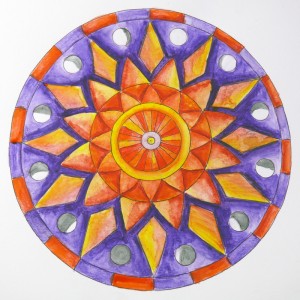
Mandalas are a blueprint inside a circumvolve often using a repeating pattern. In this tutorial, you'll see but how easy it is to create beautiful mandalas that take a sense of symmetry and remainder.
What You lot'll Need:
Paper – Select your paper based on the medium you want to use. My favorite is Bristol board as it works with a variety of medium. I've created mandalas on only about everything including manifestly re-create paper, cardboard, watercolor paper, and canvas.
Compass
Protractor
Pencil and Eraser
Blackness Fine Point Pen – Micron, Pitt, Sharpie are all good options.
Stencils (optional)
Colors – For today'south example I used Derwent Inktense pencils. Raid your stash and explore the possibilities including colored pencils, markers, and paints.
Pace ane: Draw a Circle
Using your compass, depict a circle. I propose working larger for your first mandala. Create a circle about seven-8 inches in diameter.
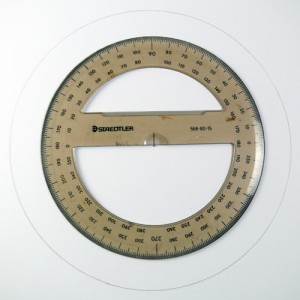
Step 2: Notice Your Center
At the center of your mandala line upwardly the protractor.
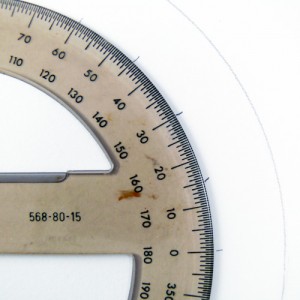
Step 3: Determine How Many Sections
In this instance, the final mandala design is divided into 12 equal sections.
Divide 360° by the number of sections to decide how big to draw each section.
For example: 360°/12=30°
Using your protractor and pencil, marker your circumvolve in thirty° increments: 30°, 60°, 90°, 120°, etc.
Another Example:
For an 8-sectioned mandala, 360°/eight=45°: 45°, 90°, 135°, 180°, 225°
Tip: I similar to double the number of sections then I accept "mid-point" guidelines.
For today'southward example I measured out 24 equal sections. 360°/24=15°
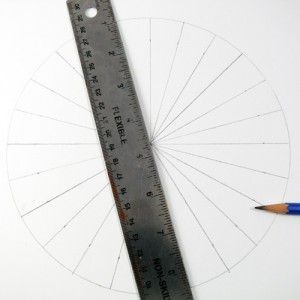
Step iv: Draw the Guidelines
Employ a ruler to connect the marks you made in step three. Exist sure to describe your lines lightly as they are guides just and you'll want to erase them in a later step.
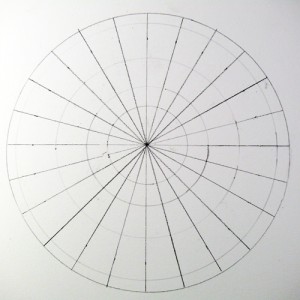
Footstep 5: Draw Several Circles
Using a compass, draw several more than circles. Vary the size of each circumvolve to create an interesting pattern.
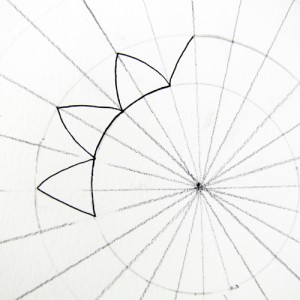
Pace vi: Begin Your Design
In this example, detect how the flower petal blueprint takes shape connecting the lesser of one filigree point to the height of the next guideline and so back downward to the next grid point. Repeat the blueprint effectually the entire circle. I used a black pen at this point. Yous may want to draw with a pencil and so trace over with a black pen.
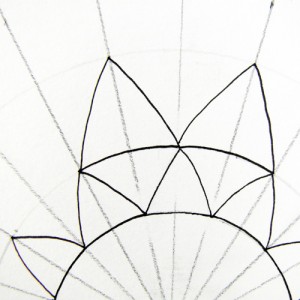
Step seven: Build Your Blueprint Outward
Move to the side by side row and draw a shape, repeating it around the entire circle. Here I accept used the aforementioned blossom petal shape. Feel complimentary to mix and match the shapes that you utilize. Find how I alternated the placement of the bloom petals in this row with the previous row.
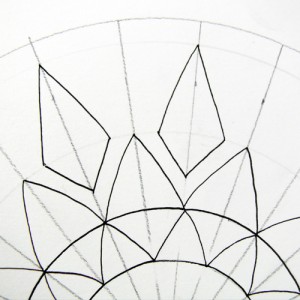
Pace 8: Vary the Shapes
In this example, I changed the shape for the third row. You may desire to depict the geometric shapes using a ruler, but I similar the expect of a mitt-drawn pattern within a carefully measured filigree. The piffling imperfections add character and charm. You'll detect that your own mode will develop with each mandala that you describe.
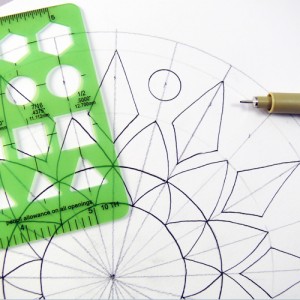
Stride 9: Endeavor Stencils
In this example I added circles using a stencil.
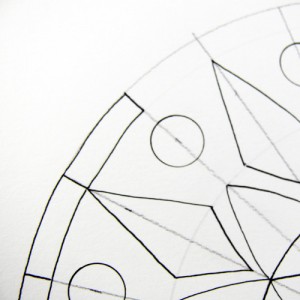
Step 10: Follow Your Instincts
I didn't plan out the blueprint for this mandala. I started in the centre and worked my fashion around until I filled the mandala with various shapes. Information technology is fun to work this way as the mandala emerges before your very own eyes. Experiment with different shapes and patterns.
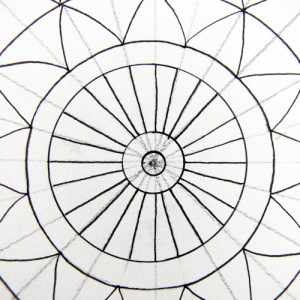
Step 11: Finishing Details
For this example, I returned to the heart and drew a couple more than circles and followed the filigree lines to create a wheel – like pattern.
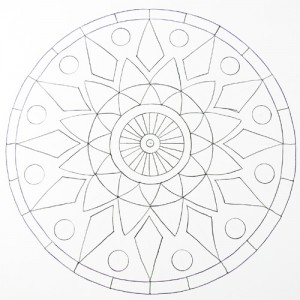
Step 12: Erase the Pencil Marks
Before adding whatsoever color, be certain to erase all of the pencil marks.
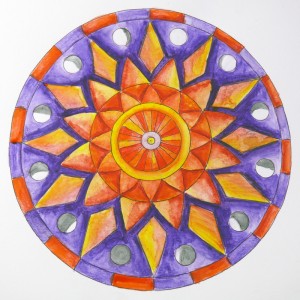
Footstep 13: Bring Your Mandala to Life With Colour
This is my favorite step. I like watching the character of my mandala sally when I add colour.
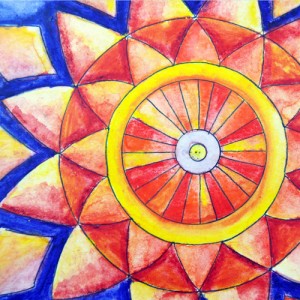
This mandala was colored using Derwent Inktense pencils. Other favorite mediums include markers, watercolors, acrylics, and colored pencils.
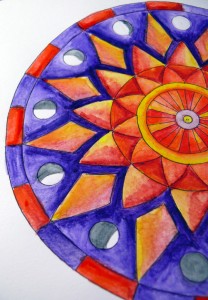
Stride xiv: Finding Meaning in Our Mandalas
As you piece of work on your mandalas, detect your thoughts and feelings. Consider the different shapes, symbols, and colors. What do they remind you of?
For this blueprint, I saw a dominicus and it wasn't until I was coloring the sun'southward rays that I made the connection that the circles could be the moon in different phases. After I stop a mandala, I relish spending time looking at it and reflecting on the "bulletin of the mandala."
I like to title my mandalas. The title doesn't always come to me right away. I may prop up the mandala and expect at it over the course of a few days earlier the name emerges. I'm yet considering the title for this mandala. Any suggestions? I'd love to hear your ideas.
Kathryn Costa hosts the 100 Mandalas Challenge and shares her love for mandalas at 100mandalas.org.
For more fun doodles and mandalas, cheque out our Zen Doodle series:
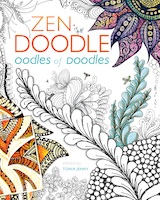

Source: https://www.createmixedmedia.com/uncategorized/how-to-draw-a-mandala-using-grids
Posted by: ramirezwharleas.blogspot.com


0 Response to "How To Draw A Mandala On Graph Paper"
Post a Comment